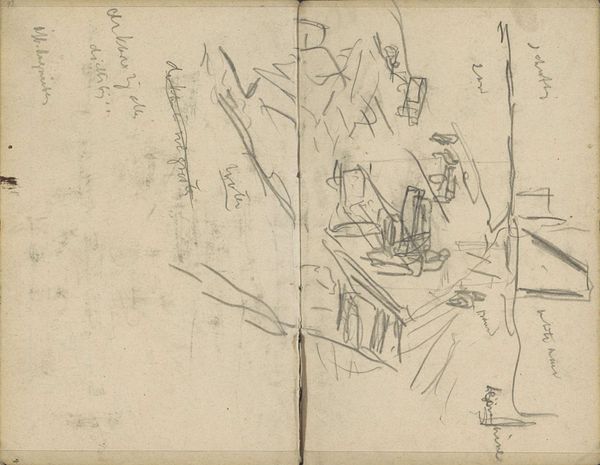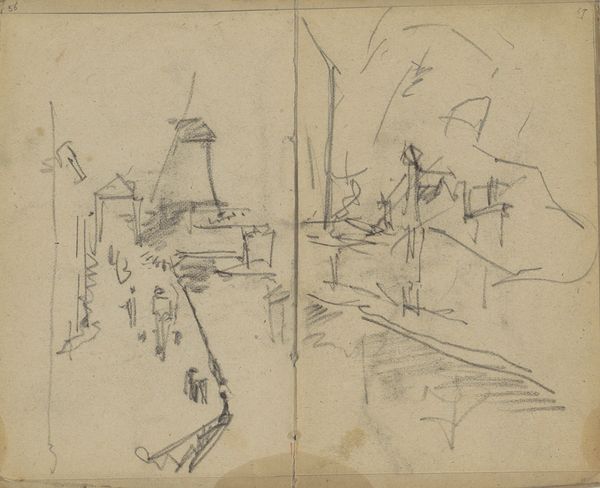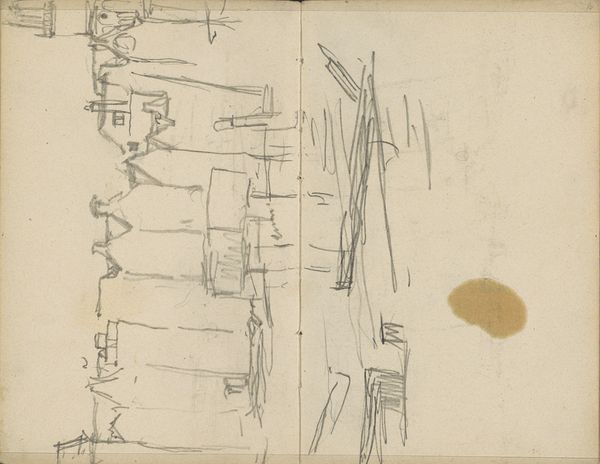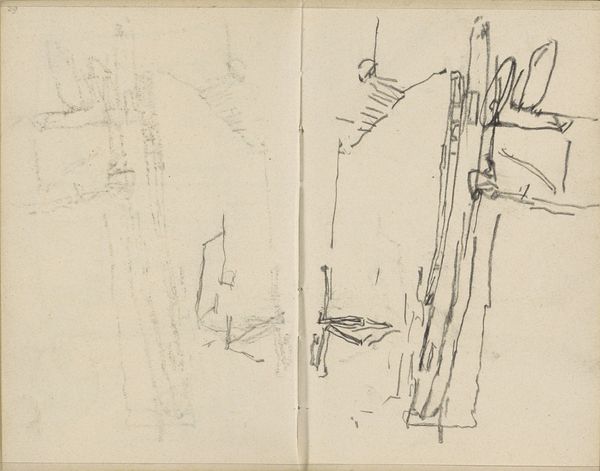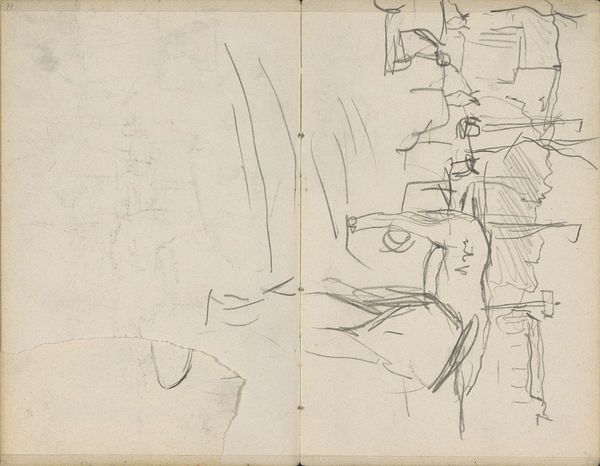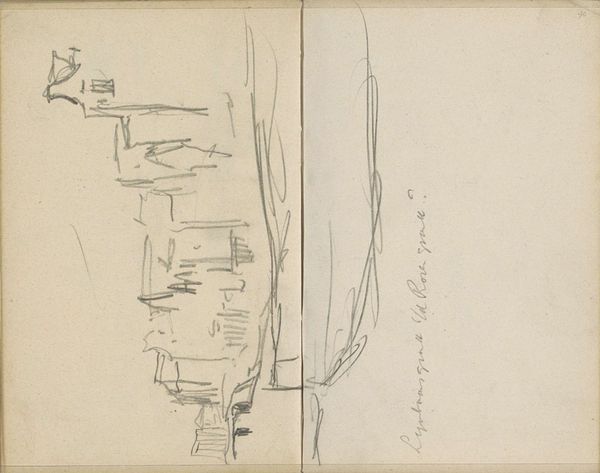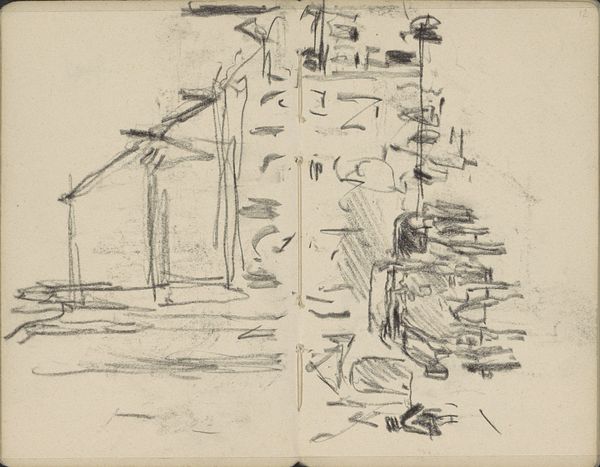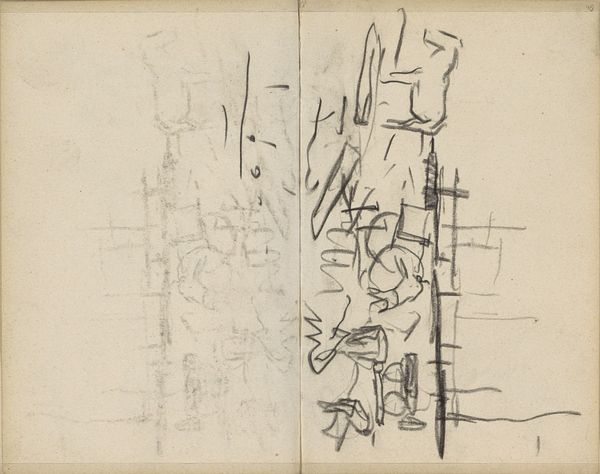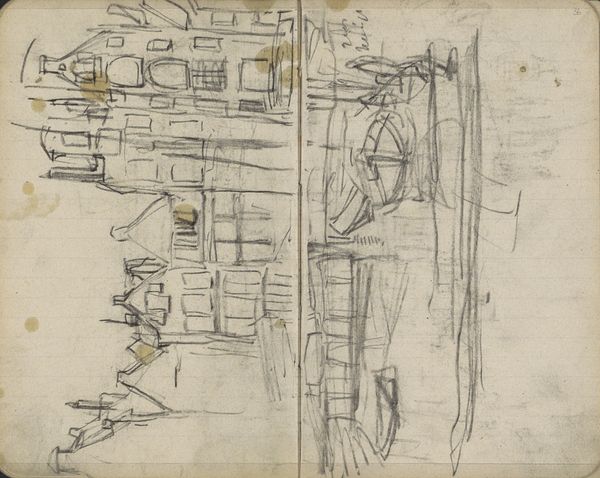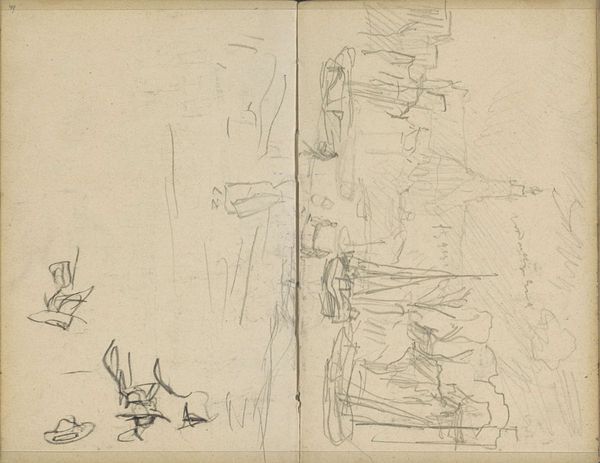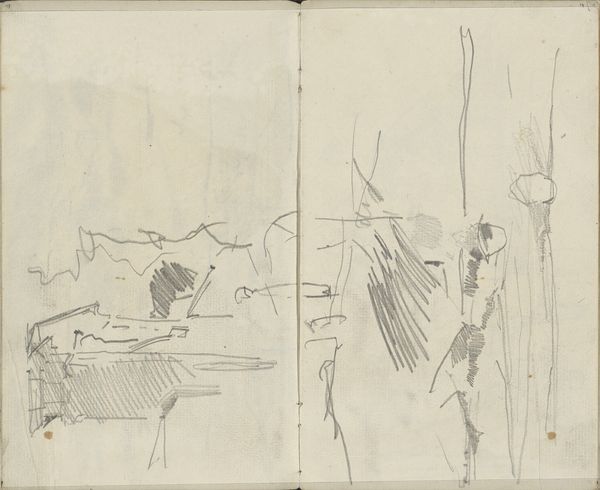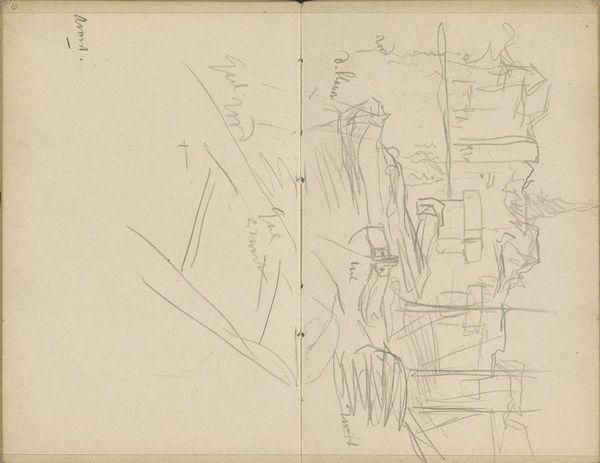
Copyright: Rijks Museum: Open Domain
Curator: Looking at this pen and pencil drawing, "Views of Boats on the Damrak in Amsterdam", dated around 1903 by George Hendrik Breitner, my first thought is: restless. There's a flurry of lines here, almost vibrating with the energy of the port. What jumps out at you? Editor: Well, beyond the sheer immediacy, it feels almost documentary. Breitner seems to have just quickly sketched his surrounding urban scene in his notebook, didn't he? We glimpse Amsterdam's early twentieth-century harbor, bustling with boats and presumably, trade and all its social echoes. It’s a window into that specific time, not some grand artistic statement, at least not obviously so. Curator: Exactly! It's this sense of direct observation, and not so much a formally constructed landscape. This sketch gives me the sensation that I'm peering over Breitner’s shoulder, watching him capturing fleeting moments. Like those quick ink drawings of Hokusai that he might have seen through the flows of international trade! It’s that sketch-book charm I love so much. Editor: Yes! And consider where the Damrak was positioned then and now—literally the front stage of the capital, its visual representation. It catered to different audiences, didn’t it? Breitner, by choosing this location and sketching it in such an offhand way, engages, and arguably, democratizes the narrative around what the Amsterdam is like as a political stage. It bypasses heroic paintings, offering glimpses accessible to any wanderer who has passed by. Curator: I think there's an underlying truth to what you're saying. It’s like he saw beauty and stories unfolding everywhere, in the mundane activities of the everyday. But is "democratic" the right word here? His impressions feel deeply personal. Editor: Personal, sure, but isn’t all art in some sense "personal?" We view his works, including this snapshot in time, within a wider network of institutions and audiences that always contextualize his creation as the creation of a public figure. Perhaps it captures both individual sentiment and the shared reality of urban living in the port city, making Amsterdam a vital international hub? Curator: Okay, I grant you that. It does indeed spark reflections of a historical moment. I leave feeling more aware of how the spirit of a bustling city can be evoked through such a simple, and dare I say, a profoundly emotional act. Editor: And I, struck by the tension between individual creation and the role played by cultural background. It demonstrates that the perceived “sketch” can hold layers of meaning within a location's cultural tapestry.
Comments
No comments
Be the first to comment and join the conversation on the ultimate creative platform.
